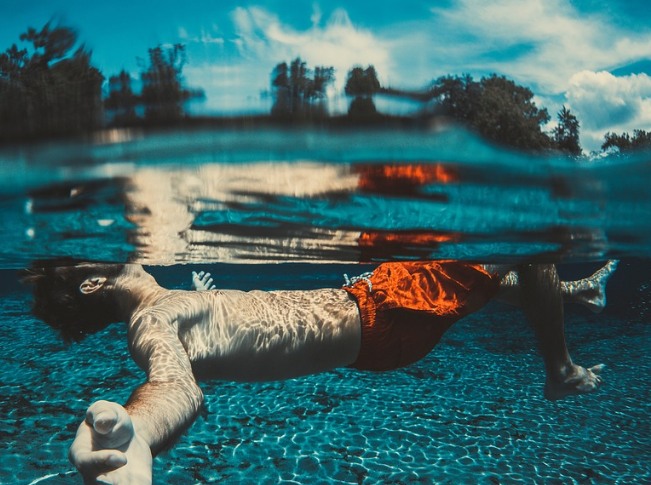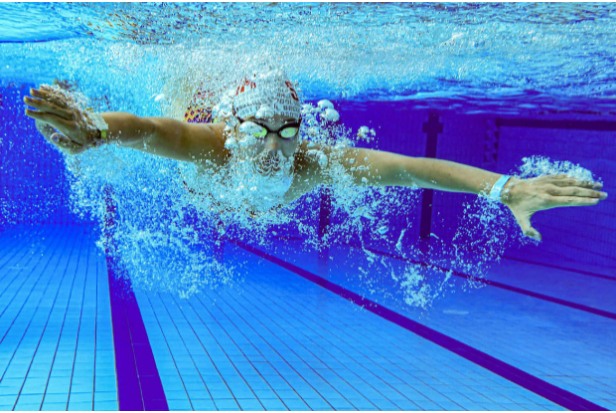Can Monkeypox Virus Live & Be Spread in Swimming Pools?
While there has not been any specific studies done on the spread of monkeypox through pools or hottubs, based on the nature of the virus, scientists have concluded that it is “unlikely” that it would be spread through a pool.
As the monkeypox epidemic persists, health officials have started keeping an eye on virus clusters at large events like pool parties and music festivals.
Smallpox-like symptoms are caused by the viral zoonosis known as monkey pox, which is contracted from animals. People are curious if they can contract monkeypox from swimming in a pool or other recreational bodies of water after hearing about the virus.
Of the 26,519 cases reported globally, the Centers for Disease Control and Prevention (CDC) has recorded 6,617 cases in the US. In response to the spread of the monkeypox virus, the government recently proclaimed a public health emergency.
It’s significant to note that no cases of monkeypox-related deaths have been reported in the US to date. The virus is most dangerous for people with weakened immune systems, according to the World Health Organization (WHO), with a fatality rate of 3% to 6%.
Although monkeypox is still comparatively rare in North America, its rapid spread throughout Africa and other parts of the world is alarming. Contrary to respiratory droplets for COVID-19, physical contact with an infected person is the main way that monkeypox is spread. The CDC claims that close, direct contact is required for the disease to spread. For such an infection to spread, “prolonged face-to-face contact,” like kissing, is necessary.
According to the Mayo Clinic, fever, headache, chills, swollen lymph nodes, fatigue, back pain, and muscle aches are common symptoms that accompany monkeypox infections.

Can You Catch Monkeypox from a Swimming Pool?
While skin-to-skin contact is the most common way to contract the virus, the answer as to whether you can contract monkeypox from a swimming pool is still inconclusive. The Centers for Disease Control and Prevention (CDC) reports that research into the spread of other pox viruses, like the more common molluscum contagiosum, has shown that spread is increased in swimming pools; however, scientists have not yet discovered evidence for how or under what circumstances this might occur.
“Swimming-related activities could be to blame. Instances, where people share a towel or toys, could result in the virus spreading from one to another. To determine whether and how long the molluscum virus can survive in swimming pool water, as well as whether or not it can infect swimmers, more research is required.” – Centers for Disease Control
Background
Concern over possible molluscum contagiosum virus transmission through swimming pools and/or equipment associated with swimming pools (e.g., towels, kick boards) is a recurring issue for parents, teachers, and coaches and for health care and public health professionals.
Numerous studies have focused on the rise in molluscum contagiosum infections among kids who swim for fun. Although biologically conceivable, epidemiologic studies have been unable to demonstrate conclusively how or under what conditions recreational swimming might facilitate molluscum contagiosum virus transmission. In fact, some studies were unable to identify any connection between using a swimming pool and the spread of viruses. Several studies that did link swimming pool use with molluscum did not adequately account for additional variables that could introduce bias or affect virus transmission, like the subjects’ ages, their engagement in other physical activities (i.e., contact sports), and their shared use of potential fomites (towels, kick boards).
The widely variable incubation period between infection and the onset of molluscum lesions (which can range from 2 weeks to 6 months), which makes it challenging to confirm an association between the event and lesion, further complicates the interpretation of molluscum transmission studies.
If coming into contact with contaminated fomites—i.e., kick boards, towels) or whether swimming in potentially contaminated water alone is sufficient for virus transmission. It is conceivable that maceration (softening) of the molluscum contagiosum lesions after submersion in water facilitates fomite transmission or person-to-person contact. Since the molluscum contagiosum virus cannot be grown using current culture methods, many of these questions cannot be directly addressed. The viability of the molluscum contagiosum virus in pool environments needs to be better understood.
Swimming Pools
When it comes to the molluscum virus and swimming pools, parents and others frequently have questions. Sharing towels, pool toys, or other items can also spread the infection, according to some worries.
Research suggests that swimming pools contribute more to the spread of molluscum contagiosum. Swimming pools could potentially speed up the spread of the virus, but it is not yet known how or under what conditions. The cause could be swimming-related activities. If two people share a towel or some toys, for instance, the virus may spread from one to the other. More investigation is required to determine whether and how long the molluscum virus can survive in swimming pool water as well as whether swimmers could become infected.
Numerous different microorganisms can infect open sores and skin breaks. As a result, those who have open wounds or breaks from any source should avoid swimming pools.
If a person with molluscum is going swimming, they should:
- Cover all visible lesions with watertight bandages
- Dispose of all used bandages at home
- Not share towels, kick boards, other equipment, or toys
Recommendations
Given that up to 10% of children may have molluscum contagiosum at any given time, the choice to forbid kids with the condition from swimming in public pools should be carefully considered. Exclusion may obstruct desperately needed physical and social outlets and lead to social stigma.
If such a policy were implemented, molluscum contagiosum would need to be diagnosed by a medical professional, and all participating kids would go through the same screening physical exam. Such screening could be included in yearly sports/camp physicals. During these physicals, a thorough skin examination should already be done to check for other conditions like atopic dermatitis. Therefore, it shouldn’t be too difficult to identify molluscum lesions during this procedure.
To help stop the spread of molluscum contagiosum and other infections acquired through contact exposures (for example, strep throat), it is reasonable to take the following precautions: covering visible lesions with a watertight bandage, disposing of all bandages at home or in a medical facility, practicing good hand hygiene, making sure that towels are not shared, and providing individual kick boards., methicillin-resistant Staphylococcus aureus). Additionally, complete disinfection and drying of kickboards ought to lessen the possibility of molluscum contagiosum transmission.
The molluscum contagiosum virus cannot be inactivated by any EPA-registered disinfectant. Surfaces that could potentially harbor the molluscum contagiosum virus can be successfully decontaminated using household bleach solutions (containing at least 200 mg/L of sodium hypochlorite), iodophores, and other EPA-registered surface disinfectants. Pay attention to the manufacturer’s instructions for handling caution, contact time, and concentration.
The risk of bacterial and mycobacterial infections should be considered when deciding whether to allow children with molluscum contagiosum who have open sores or skin breaks to swim.
